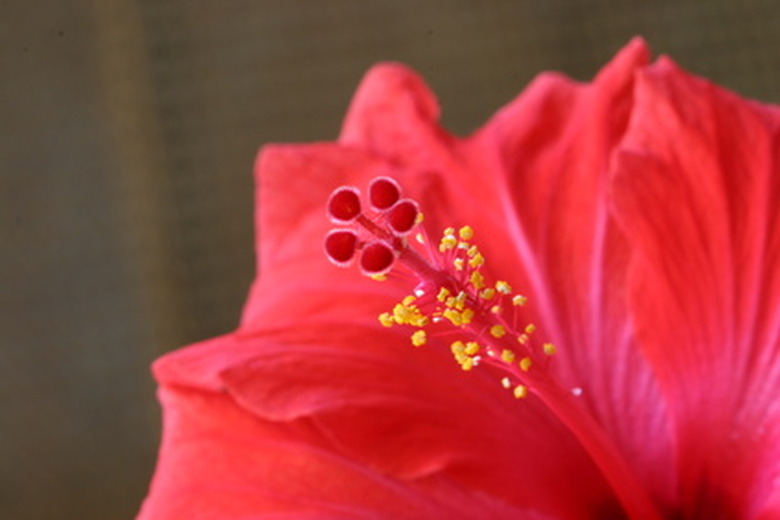How To Plant Hibiscus & Make Them Grow In Texas
Things Needed
- Potting soil
- Peat moss
- Perlite
- Planting pot
- Fertilizer
- Insecticide
- Spray applicator
Hibiscus rosa-sinensis, also known as the Chinese hibiscus, is a tropical flowering shrub. Generally grown as an ornamental, in Texas it should be planted in containers, according to an article by Dr. Jerry Parsons at plant-answers.com. This allows Texas gardeners to provide the plant with the best growing conditions and protection in cold-winter areas.
Step 1
Combine two parts potting soil, two parts of peat moss and one part perlite. Mix the potting soil ingredients until they are fully combined.
Step 2
Flush the potting mix with water, allow it to drain and flush it again. Allow the mix to drain completely. It should be moist, not soggy.
- Hibiscus rosa-sinensis, also known as the Chinese hibiscus, is a tropical flowering shrub.
- Generally grown as an ornamental, in Texas it should be planted in containers, according to an article by Dr. Jerry Parsons at plant-answers.com.
Step 3
Pour the potting mix into the pot until it is half full. Remove the hibiscus from the nursery pot and place the roots on the top of the soil in the new pot. The hibiscus should sit at the same depth as it was planted previously. You may have to add or remove soil from the pot to achieve the proper depth. Finish filling the pot with soil, to within 1 inch of the rim of the pot. Water the hibiscus again to settle the soil around the roots and remove air pockets.
Step 4
Place the hibiscus in an area where it will receive at least six hours of sun each day. In central Texas, provide the plant with afternoon shade.
- Pour the potting mix into the pot until it is half full.
- Remove the hibiscus from the nursery pot and place the roots on the top of the soil in the new pot.
Step 5
Water the hibiscus often enough to ensure that the soil is always moist. On particularly hot days in Texas, you may have to water twice a day.
Step 6
Fertilize the Texas hibiscus from April until October with a time-release 12-4-18 fertilizer, at the rate specified on the label, applied to the soil every eight weeks. Apply a water-soluble fertilizer, at the rate suggested on the package once a week.
Step 7
Inspect the hibiscus for insect infestation. In Texas, the pink hibiscus mealybug is becoming a nuisance. According to growers at the Lone Star Chapter of the American Hibiscus Society's website, pink hibiscus mealybugs inject the hibiscus plant with a lethal toxin. To control a pink mealybug infestation, drench the soil with 1 cup of a solution containing 3 tablespoons of imidacloprid (a pesticide) in 1 gallon of water. They also recommend spraying the hibiscus leaves, until they are dripping, with a solution containing 3 tablespoons of bifenehrin (a pesticide) in a gallon of water.
- Water the hibiscus often enough to ensure that the soil is always moist.
- According to growers at the Lone Star Chapter of the American Hibiscus Society's website, pink hibiscus mealybugs inject the hibiscus plant with a lethal toxin.
Tip
Use the insecticide containing imidacloprid during the evening when bee activity is at its lowest.
Warning
Pesticides and fertilizers may contain chemicals that are toxic to humans and pets. Read and follow all label directions, wear protective clothing during application and store the chemicals out of the reach of children and pets.
